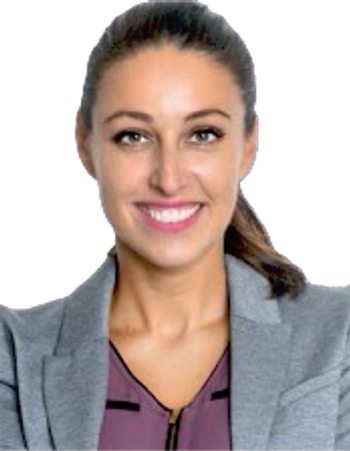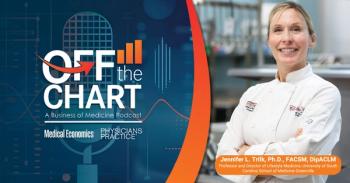
Specialty telemedicine for independent practices
Physicians Practice® spoke with Dr. Jonathan Wisen, Founder and Chief Medical Officer of MediOrbis, about specialty telemedicine for the treatment of chronic conditions and how these technologies can improve a practice's offerings and patient outcomes.
Physicians Practice®: Continuing our focus on Burnout this month, we are featuring my conversation with Dr. Jonathan Wisen about speciality telemedicine and how it might help reduce increased telehealth burdens reported during the pandemic.
In a recent contribution to Physician’s Practice®, Dr. Jonathan Wiesen, Founder and Chief Medical Officer of MediOrbis wrote, "Approximately
A helpful place to start for this particular discussion is to identify what exactly 'specialty telemedicine' is and
Dr. Jonathan Wiesen: Telemedicine, telehealth, general telemedicine, and specialty telemedicine mean different things to different people. In our company, when we refer to specialty telemedicine, we're describing a mode of telemedicine which is nuanced, which is specific to an area, and which requires a higher level of expertise. That might be specialty telemedicine, much as you think of clinical medical specialists like cardiology questions, nephrology consultations, and endocrine issues; or it may be a very specific area of focus, like chronic disease management, which is which is unique and requires a level of sophistication and expertise. So, general telemedicine has been around for a long time. It's a well-trodden path. But developing very specific and specialized areas of expertise is something that we've been working on many Orbis.
Physicians Practice®: One area in which specialty telemedicine may increase effectiveness is in chronic care management.
Wiesen: One of one of the issues in medicine that we've been struggling with for years is the “silo effect”. Physicians, care providers, patients, and technology have all been working in their own individual areas and domains and there hasn't been good integration between them.
Specifically, weight loss programs have been around from time immemorial. I mean, I remember my grandmother, starting a weight loss program, when I was just a few years old. And that had nothing seemingly to do with some of the programs that we're seeing now. But it was very specific, and it wasn't with the recommendation of precision physician, it wasn't integrated into overall clinical care. And so, when you have a specialty telehealth program, led by physicians like we [MediOrbis] do, it improves patients—not just their particular program that they're involved in, but the overall clinical and medical picture, because it's integrated with care providers.
Digital health has been around for quite some time, and especially over the last few years, we've seen great growth in that area. But all too often we find that it's a path to nowhere, and you may get an alert or a notification that something is amiss, but there's no one to really help you manage that. And so, by integrating everything under the auspices of a physician, or a specialist who's trained and knowledgeable in the areas that you're working under, you're able to not just monitor clinical conditions and give recommendations, but actually manage them from a clinical medical standpoint.
Physicians Practice®: Telemedicine may present new obstacles for physicians, and specialty telemedicine—with its unique focuses—is no different.
Wiesen: I think that in any area of telemedicine, you encounter obstacles. But the truth of the matter is that in clinical medicine you do as well.
I've been practicing clinical medicine now for 15 years, and I've been in resource-poor environments and resource-poor clinics. And I've also been in some of the top medical institutions in the world. And everywhere that you practice there are components of the care that you deliver that rely on your surroundings and others that you have to realize, “Okay, I don't have access to those particular components and therefore have to function independently of the area that I find myself in.”
Telemedicine is no different. There are some areas of telemedicine of clinical care that are much better with telemedicine. I find that sometimes you can establish a rapport more easily with telemedicine because you're sitting down, you're focused, there's nothing else bothering you. You can you also have to take a great history.
I’m a pulmonary specialist and patients come to me all the time with abnormal CT scans. You know, the first thing they do is they hand you a disc and then you look at it and sometimes I don't even get to hear their story. Whereas with telemedicine, you're forced to encounter the patient, to interact with the patient, create a connection with the patient, hear exactly what's going on, and then make your clinical decisions. There are certain limitations—I'm not standing next to you, I can't do a procedure if it's indicated, and it could be that there are certain diagnostic tests that I would like that I can offer as well. At the same time, I think that there are great benefits as well. And just like in clinical medicine, if you know what you have access to and know what you don't have access to, then you can practice appropriately for the environment that you find yourself in.
Physicians Practice®: For physicians looking to use telemedicine to treat patients with chronic conditions, Dr. Wisen says that there are three things you should be striving for in your telemedicine program.
Wiesen It's really, really important to put together a program that's intuitive, that's intelligent, and that's easy for patients. You know, I actually taught for four years in between undergrad and medical school and I learned from a great mentor that he said: “It's not important what I teach, it's important what the students learn.” And it's the same idea in medicine: what I say is irrelevant, what the patient does is important. If I prescribe a million medications, and they don't take a single one, I've accomplished nothing.
So, we designed a program, where it's engaging, where it's simple, where it can be accessed from any device at any time, where everything is presented with a nice user experience that the patients can easily access it, they can easily ask for help with just the click of a button. They can interact with staff very simply through technology modalities, or any means that they prefer some of the elderly patients prefer to call up call us on the phone, younger patients, we just want to send a text message and be done with it. Whatever your preferences, that's what we want to provide. And again, it's not really important, what I say it's important what the patient does. And we designed all of our chronic disease programs and our clinical programs in the specialty realm with that in mind.
That's really important for all patients to know that having digital health solutions is not sufficient, having just telemedicine is not sufficient, but having a health record that that can pull in all the information from the different components that can pull in all the information from your physicians, and that can present it in a manner that's simple and easy to access is crucial and integral.
So again, EHR, and we won't get into all of my feelings about EHRs in general, but an EHR is supposed to be an electronic modality for managing your care. And to the extent that it does that, it'll be useful and to the extent that it doesn't do that it will not be useful. And that's exactly how we designed ours as well.
Newsletter
Optimize your practice with the Physicians Practice newsletter, offering management pearls, leadership tips, and business strategies tailored for practice administrators and physicians of any specialty.













